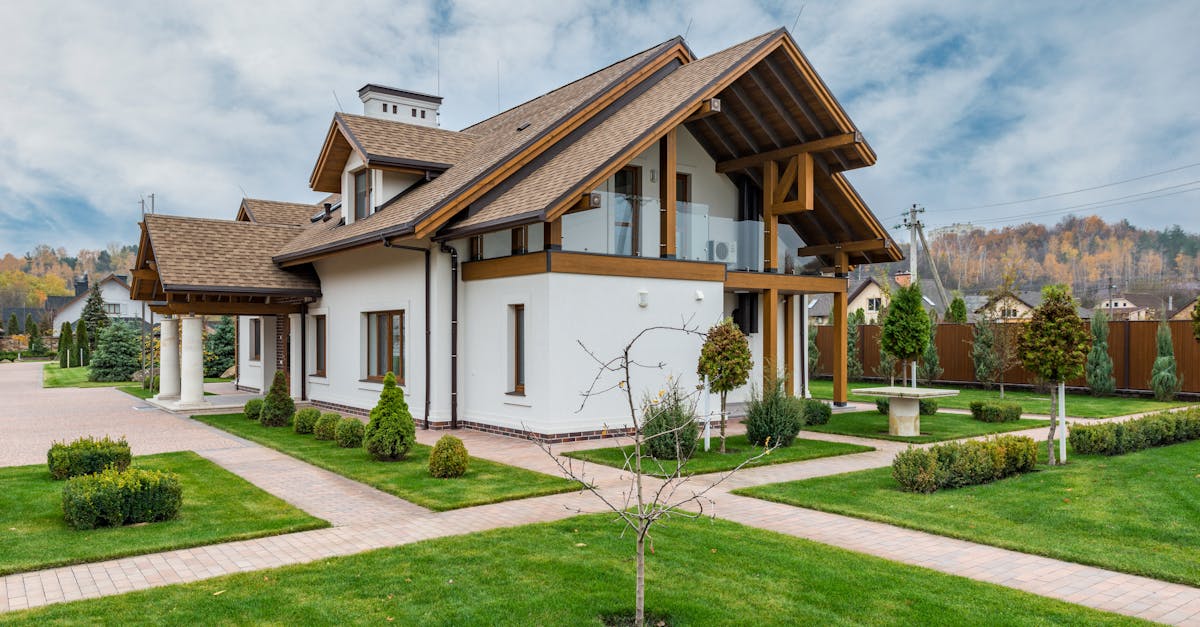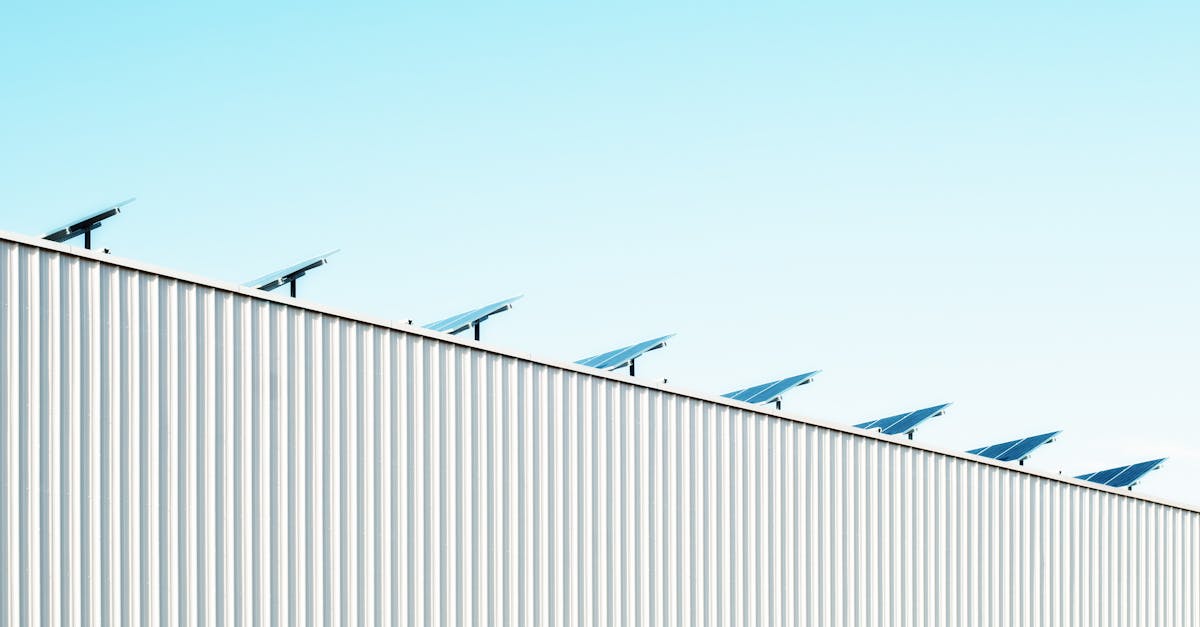Harmonizing Sustainability: HVAC’s Journey in Green Building Design

Green building design has revolutionized the way we construct infrastructures, placing a strong emphasis on sustainability and environmental responsibility. Central to this movement is the critical role of Heating, Ventilation, and Air Conditioning (HVAC) systems, which not only ensure optimal comfort but also play a pivotal part in promoting energy efficiency and reducing environmental impact. This article delves into the intricate relationship between HVAC systems and sustainable infrastructures, uncovering the essential components, technological advancements, regulatory landscape, and future trends that define the evolving landscape of green building design. By understanding the multifaceted role of HVAC systems and their seamless integration with green building principles, it becomes evident that they serve as key allies in our collective pursuit of a more sustainable future.
1. Understanding Green Building Design
Thank you for reading this post, don't forget to subscribe!
Understanding green building design involves exploring the fundamental concepts and principles that underpin environmentally responsible construction processes. Green building design, often referred to as sustainable or environmentally friendly construction, focuses on creating structures that are resource-efficient, environmentally responsible, and healthy to live or work in. This approach encompasses various aspects, including efficient use of energy, water, and other resources, as well as the integration of renewable energy sources and environmentally friendly materials. Additionally, it involves considerations for the overall environmental impact of the building, from its construction to its operation and eventual decommissioning.
Fundamentally, green building design emphasizes the holistic interplay between the built environment and the natural world. It seeks to minimize the ecological footprint of buildings by incorporating sustainable design elements and technologies that reduce energy consumption, waste, and pollution while prioritizing the health and well-being of occupants. From utilizing passive solar design to maximize natural lighting and heating to incorporating green roofs and living walls, green building design prioritizes a symbiotic relationship between human habitats and the surrounding ecosystem.
Furthermore, the principles of green building design extend beyond the construction phase, encompassing the entire lifecycle of a building. This includes aspects such as efficient building operation and maintenance, ongoing performance monitoring, and strategies for eventual renovation or demolition. By delving into the foundational concepts and principles of green building design, we gain insights into the integral role that sustainable construction practices play in shaping a healthier, more resilient built environment for the future.
Definition of Green Building
The definition of green building design centers on the creation of structures that prioritize sustainability and environmental responsibility across their entire lifecycle. At its core, green building design involves the integration of strategies that aim to mitigate the impact of construction and operation on the environment while promoting the health and well-being of occupants. These strategies often include the use of energy-efficient materials, renewable energy sources, water conservation methods, and the implementation of systems that enhance indoor air quality and overall comfort. The emphasis on sustainability extends beyond the building itself and encompasses the integration of the structure within the broader natural and urban environment.
A key facet of green building design is the holistic approach to construction, which goes beyond individual building components or systems. This approach considers the interconnectedness of various factors such as site selection, material choices, energy consumption, waste management, and the overall impact on the environment. It’s a comprehensive system that takes into account the building’s environmental footprint, from its inception through its entire operational life. By focusing on sustainability in design, construction, and operation, green buildings are designed to reduce energy consumption, minimize waste, and lower overall environmental impact.
Moreover, the concept of green building design emphasizes a shift towards environmentally responsible and resource-efficient methodologies. Buildings designed with green principles strive to achieve a harmonious balance between human habitation and natural ecosystems, aiming to create spaces that not only minimize negative environmental impact but also contribute positively to their surroundings through sustainable design, construction, and operation practices.
Key Elements of Sustainable Infrastructures
The key elements of sustainable infrastructures entail a comprehensive examination of the fundamental components and characteristics that define environmentally responsible structures within the realm of green building. Sustainable infrastructures encompass a spectrum of features that collectively contribute to minimizing environmental impact while maximizing resource efficiency. This includes a focus on the selection of appropriate building materials that are both durable and environmentally friendly, the implementation of energy-efficient systems and technologies, and the integration of designs that optimize natural resources such as sunlight and ventilation.
Central to the concept of sustainable infrastructures is the consideration of the entire lifecycle of a building, from its construction through its operational phase and eventual decommissioning. It involves the adoption of strategies that mitigate the environmental footprint of a structure, ranging from efficient site selection and land use to waste reduction and water conservation methods. Sustainable infrastructures also prioritize the health and well-being of occupants through the provision of high indoor air quality, ample natural light, and comfortable, adaptive spaces that support productivity and overall wellness.
Furthermore, the integration of sustainable infrastructures aligns with the broader goal of fostering resilient and ecologically sensitive communities. By emphasizing the interplay between buildings and their surrounding environments, sustainable infrastructures aim to minimize negative environmental impact, contribute positively to urban landscapes, and establish a framework for long-term sustainable development. This holistic approach not only enhances the quality of built spaces but also sets a precedent for environmentally responsible construction practices that resonate with the principles of green building design.
2. The Essential Role of HVAC Systems

The essential role of HVAC systems in green buildings revolves around understanding the pivotal function they play in promoting sustainability and environmental responsibility. HVAC systems, which include Heating, Ventilation, and Air Conditioning, are integral to creating and maintaining a comfortable, healthy indoor environment while simultaneously minimizing energy consumption and reducing environmental impact. These systems are designed to regulate temperature, humidity, and air quality within buildings, optimizing occupants’ comfort while contributing to overall energy efficiency.
Energy efficiency stands as a fundamental focus of HVAC systems within the context of green buildings. By integrating energy-efficient technologies and practices, HVAC systems aim to reduce the carbon footprint of buildings by minimizing energy consumption for heating, ventilation, and cooling. This not only aligns with sustainability goals but also has the potential to significantly lower operational costs, making green buildings more economically viable over the long term. In addition to energy efficiency, HVAC systems are engineered to contribute to indoor air quality management. By effectively controlling and filtering indoor air, these systems promote healthier environments for building occupants while ensuring minimal environmental impact.
Moreover, the strategic integration of HVAC systems enhances the overall performance and sustainability of green buildings. Through advanced design and technology, these systems are tailored to optimize resource usage, effectively managing energy and water consumption. By recognizing the essential role of HVAC systems in green buildings, it becomes evident that their design and utilization significantly influence the ecological footprint and operational efficiency of sustainable infrastructures.
Energy Efficiency in HVAC
Energy efficiency in HVAC systems is a critical aspect when considering the overarching goal of reducing environmental impact and enhancing building sustainability. HVAC systems account for a significant portion of a building’s energy consumption, making their efficiency crucial in achieving sustainability targets. Energy-efficient HVAC systems are designed to optimize performance while minimizing energy usage, thereby lowering operational costs and decreasing the environmental footprint of buildings. Employing advanced technologies such as high-efficiency heat pumps, variable-speed drives, and intelligent control systems, energy-efficient HVAC solutions offer enhanced performance and reduced energy consumption, aligning with green building standards and environmental conservation efforts.
The importance of energy-efficient HVAC systems extends beyond immediate cost savings, playing a vital role in mitigating the environmental impact of buildings. By reducing energy demand for heating, cooling, and ventilation, these systems contribute to decreased greenhouse gas emissions and overall energy consumption. Furthermore, the implementation of energy-efficient HVAC technologies aligns with sustainable building practices, fostering a more resource-responsible approach to the construction and operation of buildings. As a result, energy-efficient HVAC systems not only support energy conservation efforts but also elevate the overall sustainability and environmental performance of structures.
In the broader context of green building design, energy-efficient HVAC systems are instrumental in achieving certification and compliance with environmental standards. These systems represent a fundamental component in meeting energy efficiency requirements, contributing significantly to the overall sustainability and environmental responsibility of buildings. By prioritizing energy efficiency in HVAC systems, structures can reduce their carbon footprint and operational costs while bolstering their commitment to sustainable and environmentally conscious practices.
Indoor Air Quality Management
Indoor air quality management is a pivotal aspect of building operations, and HVAC systems play a crucial role in maintaining high indoor air quality while minimizing energy consumption. These systems are designed to not only regulate temperature and humidity but also effectively manage air circulation and filtration, thereby ensuring that occupants are provided with a healthy and comfortable indoor environment. Properly maintained HVAC systems contribute to mitigating indoor air pollutants, allergens, and contaminants, promoting a healthier atmosphere for building occupants. Achieving the delicate balance between indoor air quality and energy efficiency is a cornerstone of modern HVAC systems. Technological advancements have led to the development of energy-efficient HVAC solutions that incorporate intelligent controls, variable-speed drives, and advanced filtration systems. These innovations enable precise regulation of indoor air quality while optimizing energy usage, ensuring that buildings maintain a healthy environment without compromising on sustainability or operational costs. Furthermore, the symbiotic relationship between indoor air quality and energy-efficient HVAC systems aligns with the broader objectives of sustainable building design. By integrating strategies that prioritize both indoor air quality management and energy efficiency, building operators and designers can create spaces that promote occupant well-being while adhering to environmental responsibility. From advanced air filtration methods to intelligent ventilation controls, the evolving landscape of HVAC technology continues to drive improvements in indoor air quality management, championing healthier and more sustainable indoor environments. Through a comprehensive approach that encompasses advanced technology, meticulous maintenance, and informed operational practices, HVAC systems are at the forefront of maintaining high indoor air quality while concurrently minimizing energy consumption, thus fostering environments that prioritize health, sustainability, and efficiency.
3. Leveraging Technology for Environmental Impact
In the realm of green building design, the relentless march of technological innovation has ushered in a new era of environmentally conscious HVAC solutions. These advanced technologies are instrumental in reducing the environmental impact of buildings while simultaneously enhancing energy efficiency and overall sustainability. From utilizing smart sensors and automated controls to harnessing the potential of Building Management Systems (BMS), innovative HVAC technologies are transforming the landscape of green building design. These systems optimize energy consumption, improve operational efficiency and performance, and ensure precise regulation of indoor environmental conditions, thereby significantly contributing to reducing the environmental footprint of buildings. Moreover, the integration of innovative HVAC technologies aligns seamlessly with the broader goals of sustainable building practices. By embracing technologies such as geothermal heat pumps, variable refrigerant flow (VRF) systems, and demand-controlled ventilation, green buildings are empowered to minimize energy usage and dependency on non-renewable resources. These advancements not only elevate building performance but also foster a more eco-friendly approach to construction and operation. In conjunction with renewable energy integration and energy-efficient design, these technologies play a vital role in propelling green building design towards a future characterized by enhanced environmental stewardship and resource efficiency. As the trajectory of innovative HVAC technologies continues to evolve, the amalgamation of artificial intelligence (AI) and machine learning with HVAC systems is poised to further revolutionize sustainability in green building design. AI-driven HVAC solutions optimize energy usage, fine-tune operational parameters based on environmental conditions, and enable predictive maintenance, thus bolstering efficiency and sustainability. Embracing these technological advancements underscores a commitment to reducing environmental impact, fostering more sustainable built environments and fortifying the foundation upon which green building design thrives.
Smart HVAC Systems
Smart HVAC systems are at the forefront of revolutionizing energy efficiency and environmental sustainability within building infrastructures. These systems leverage advanced sensors, predictive analytics, and adaptive controls to optimize energy consumption, reduce operational costs, and minimize environmental impact. By continuously monitoring and adjusting their performance based on real-time data, smart HVAC systems ensure that heating, ventilation, and air conditioning operations are precisely tailored to actual requirements, thereby preventing energy wastage and enhancing overall resource efficiency. These systems also facilitate proactive maintenance, identifying issues before they escalate, and consequently improving the longevity and reliability of HVAC equipment. The role of smart HVAC systems extends beyond mere energy optimization; they also actively contribute to environmental sustainability. Through their ability to respond dynamically to building occupancy, external weather conditions, and internal environmental factors, these systems minimize unnecessary energy usage while maintaining optimal comfort levels. This adaptive approach not only reduces the carbon footprint of buildings but also aligns with broader environmental responsibility and sustainability objectives. Moreover, the integration of smart HVAC systems champions the convergence of technology and environmental conservation. By embracing principles of machine learning and artificial intelligence, these systems continuously learn and adapt, refining their operational strategies to achieve peak efficiency without sacrificing occupant comfort. As the symbiotic relationship between technology, energy optimization, and environmental sustainability continues to evolve, the critical role of smart HVAC systems persists in shaping a future wherein buildings seamlessly harmonize energy and environmental stewardship.
Renewable Energy Integration
The integration of renewable energy sources with HVAC systems represents a significant stride in advancing sustainability within building infrastructures. By harnessing renewable energy, such as solar power, wind energy, and geothermal heat, HVAC systems can substantially reduce their dependency on traditional energy sources, thus lowering carbon emissions and environmental impact. Renewable energy integration not only curtails the reliance on non-renewable resources but also contributes to optimizing building sustainability by aligning with environmentally friendly approaches and energy conservation. Moreover, the synergy between renewable energy integration and HVAC systems underscores a broader commitment to enhancing the overall environmental performance of buildings. The utilization of renewable energy sources to power HVAC operations serves as a testament to the evolving landscape of sustainable infrastructure, emphasizing a shift towards greener and more responsible energy consumption. In conjunction with energy-efficient technologies, the integration of renewable energy with HVAC systems plays a pivotal role in promoting cleaner, more sustainable building operations while concurrently reducing the ecological footprint. The discussion surrounding the integration of renewable energy sources with HVAC systems also reflects the collaborative evolution of technology, environmental responsibility, and energy efficiency. By tapping into renewable energy, HVAC systems are poised to elevate the sustainable performance of buildings, aligning with global efforts to transition towards cleaner, more resilient energy solutions. Embracing renewable energy integration within HVAC systems encapsulates a strategic pursuit of energy independence, resource efficiency, and a steadfast commitment to shaping a more sustainable and environmentally conscious future for building design and operation.
4. Regulatory Standards and Compliance

In the realm of green building design, comprehending the regulatory landscape and compliance requirements for HVAC systems stands as a cornerstone of fostering environmentally responsible and sustainable infrastructures. HVAC systems in green buildings are subject to a myriad of standards and regulations aimed at ensuring energy efficiency, environmental responsibility, and occupant comfort. Leadership in Energy and Environmental Design (LEED) certification represents a prominent benchmark for green building compliance, evaluating HVAC systems based on their contribution to energy savings, indoor air quality, and environmental impact mitigation. Similarly, other regional and international regulatory frameworks, such as the International Green Construction Code (IgCC) and the European Union’s Energy Performance of Buildings Directive, set rigorous standards for HVAC system performance, energy efficiency, and environmental impact across varied contexts. Understanding and adapting to regulatory standards is imperative for ensuring that HVAC systems within green buildings align with prescribed sustainability targets. Compliance with regulatory standards not only facilitates energy conservation and greenhouse gas reduction but also bolsters building performance and overall sustainability. Adhering to these standards necessitates meticulous planning, diligent system design, and robust documentation to demonstrate compliance, ultimately affirming that HVAC systems contribute positively to a building’s environmental profile.
LEED Certification for HVAC Systems
Achieving Leadership in Energy and Environmental Design (LEED) certification presents an essential milestone in demonstrating a building’s commitment to sustainability and environmental responsibility. Within the context of green building design, HVAC systems directly contribute to the attainment of LEED certification by adhering to stringent performance standards that emphasize energy efficiency, indoor environmental quality, and environmental impact mitigation. Specifically, HVAC systems play a pivotal role in meeting LEED certification prerequisites and credits associated with energy optimization, air quality management, and overall environmental performance. The integration of energy-efficient HVAC solutions, innovative technologies, and sustainable design practices aligns with the stipulations set forth by LEED, ensuring that buildings meet and exceed specified environmental benchmarks. LEED certification for HVAC systems encompasses diverse factors, including the use of high-efficiency equipment, advanced control strategies, and meticulous system design and installation, all aimed at reducing energy usage and environmental impact. Additionally, the holistic consideration of HVAC systems’ lifecycle performance, from construction and operation to maintenance and decommissioning, falls within the purview of LEED certification standards, emphasizing the long-term sustainability of building operations and environmental responsibility. By scrutinizing HVAC system performance, adherence to maintenance protocols, and efficient resource management, LEED certification highlights the critical role of HVAC systems in shaping environmentally conscious, sustainable building operations.
Governmental Policies Impacting HVAC Design
Governmental policies and regulations wield substantial influence over the design and implementation of HVAC systems within green buildings, playing a pivotal role in shaping the trajectory of sustainable construction and environmental responsibility. These policies encompass a wide array of mandates, codes, and standards that are designed to govern the energy efficiency, environmental impact, and overall performance of HVAC systems. In many jurisdictions, governmental policies stipulate specific energy performance requirements, ventilation standards, and emissions criteria that directly impact the design, installation, and operation of HVAC systems within green buildings. Furthermore, government initiatives may offer incentives, tax credits, or financial support to encourage the integration of energy-efficient HVAC technologies, renewable energy systems, and sustainable design practices, thereby facilitating the adoption of environmentally responsible building solutions. Moreover, analyzing the influence of governmental policies on HVAC design underscores the collaborative effort between regulatory bodies and industry stakeholders to advance sustainable building practices. These policies not only establish benchmarks for energy performance and environmental impact but also foster a climate of innovation and improvement within the HVAC industry. By aligning with governmental policies that prioritize energy conservation, emissions reduction, and sustainable design, HVAC systems are steered towards a path that harmonizes with broader environmental and societal goals while concurrently supporting economic viability and operational efficiency within green buildings. The examination of governmental policies impacting HVAC design provides insight into the intricate interplay between legislative frameworks, industry dynamics, and the imperative to develop environmentally responsible building infrastructures. By navigating the landscape of governmental policies, designers, manufacturers, and building operators can leverage this framework to cultivate a sustainable, energy-efficient built environment that aligns with governmental sustainability targets and environmental stewardship.
5. Challenges and Solutions in Green HVAC Design
Implementing green HVAC systems in sustainable infrastructures presents its own set of challenges, albeit with a host of potential solutions. One of the primary obstacles lies in the initial investment required for integrating energy-efficient HVAC technologies and sustainable design practices. While the upfront costs may seem prohibitive, over time, the long-term operational savings, energy efficiency gains, and environmental benefits far outweigh the initial financial considerations. This necessitates a careful cost-benefit analysis and a holistic perspective that accounts for the extended lifecycle of green HVAC systems, their impact on overall building efficiency, and their pivotal role in reducing environmental footprint. Additionally, the integration of green HVAC systems requires a meticulous approach to system design, installation, and ongoing maintenance. Properly sizing equipment, implementing advanced control strategies, and ensuring regular maintenance routines are critical for maximizing the efficiency and performance of green HVAC systems. These challenges are met with solutions such as advanced building simulation tools, sophisticated energy modeling, and strict adherence to industry best practices, all of which contribute to the effective implementation and ongoing optimization of green HVAC systems. Moreover, the adoption of green HVAC systems within sustainable infrastructures necessitates a shift in mindset and a paradigm change regarding conventional HVAC approaches. This shift involves fostering a culture of education, training, and awareness related to the benefits and operational nuances of green HVAC systems. By investing in workforce development, knowledge transfer, and industry outreach, stakeholders can overcome resistance to change, ensuring that green HVAC solutions are not only accepted but embraced as a fundamental component of sustainable building design.
Adoption Barriers for Green HVAC Systems
The adoption of green HVAC systems within green building design encounters several prevalent barriers and challenges that can hinder widespread integration. Financial considerations represent a significant barrier, as the upfront costs associated with installing energy-efficient HVAC technologies and implementing sustainable design practices may pose a hurdle for many stakeholders. Overcoming this obstacle often requires a nuanced approach, wherein robust cost-benefit analyses, long-term operational savings assessments, and a clear understanding of the extended lifecycle benefits of green HVAC systems play a pivotal role in demonstrating their economic viability and the overall value they bring to sustainable infrastructures. Additionally, addressing financing options, incentives, and innovative funding models can help mitigate this adoption barrier, making green HVAC systems more accessible and appealing for implementation. Another common challenge lies in the resistance to change and the familiarization with new technologies and operational paradigms. The transition to green HVAC systems necessitates a paradigm shift, requiring education, training, and effective knowledge transfer to align stakeholders with the principles and operational details of energy-efficient HVAC technologies and sustainable design. Overcoming this challenge involves cultivating a culture of awareness, broad industry outreach, and workforce development, thus equipping industry professionals and decision-makers with the necessary tools for embracing green HVAC solutions and procedures. Moreover, regulatory complexities and constraints also present a hurdle, with varying regional and international standards, codes, and compliance requirements often posing implementation challenges. Overcoming these regulatory barriers requires strategic alignment with governmental policies, proactive engagement with regulatory bodies, and a meticulous approach to demonstrating compliance and environmental stewardship. Addressing these barriers fosters a conducive environment for the widespread adoption of green HVAC systems, facilitating the transition towards a more sustainable and environmentally responsible built environment.
Innovative Approaches to HVAC Design
Innovative approaches to HVAC design are shaping the future of sustainable building practices, addressing challenges and pushing the boundaries of energy efficiency, environmental responsibility, and operational performance. With an emphasis on overcoming barriers, technological advancements are driving the evolution of green HVAC systems. Advanced building simulation tools and computer-aided design enable meticulous energy modeling, sophisticated performance analysis, and enhanced system optimization, thus allowing for the design and implementation of HVAC solutions that seamlessly align with environmental objectives and sustainability targets. Moreover, the integration of smart sensors, real-time data analytics, and predictive maintenance strategies represents a significant leap in green HVAC design. These cutting-edge methodologies empower HVAC systems to adapt dynamically, respond proactively to building and environmental conditions, and optimize energy usage while minimizing operational costs and environmental impact. Additionally, the application of advanced materials, intelligent controls, and innovative system architectures fosters high-performance, adaptive HVAC solutions that prioritize energy efficiency, occupant comfort, and sustainable operation. Exploring and embracing these pioneering approaches necessitates a collaborative environment, encouraging interdisciplinary innovation, knowledge sharing, and a collective commitment to advancing green HVAC design. By championing open dialogue, fostering industry partnerships, and nurturing a culture of invention and exploration, the field of green HVAC design continues to evolve, spearheading groundbreaking solutions that reframe the boundaries of energy efficiency and environmental stewardship within the built environment.
6. Future Trends in Sustainable HVAC Design
In the realm of sustainable HVAC design, several emerging trends and developments are reshaping the landscape of green building infrastructures. One prominent trend is the increasing integration of artificial intelligence (AI) and machine learning algorithms into HVAC systems. This advancement enables HVAC solutions to adapt dynamically to changing environmental conditions, optimize energy usage, and perform predictive maintenance, thus enhancing operational efficiency while simultaneously reducing environmental impact. Furthermore, the convergence of AI with HVAC systems opens the door to a new era of adaptive, intelligent building operations, setting the stage for more responsive, resilient, and energy-efficient infrastructure. Another noteworthy trend is the growing emphasis on multi-functional, integrated building systems that synergize HVAC technologies with other building components, such as lighting, thermal regulation, and energy management. This holistic approach not only optimizes resource usage but also streamlines building operations, reduces maintenance costs, and enhances overall energy performance within green building infrastructures. By harnessing interconnected, intelligent building systems, sustainable HVAC design is evolving to foster a more harmonious and efficient utilization of resources, while aligning with the principles of sustainability and environmental stewardship. The future of sustainable HVAC design is also characterized by an increased focus on high-performance, adaptable HVAC solutions that prioritize flexibility, occupant comfort, and responsiveness to fluctuating environmental conditions. These advanced systems leverage innovative materials, next-generation sensors, and precise, adaptive controls to create responsive, sustainable indoor environments that dynamically adjust to changing needs. The holistic and adaptive nature of these future HVAC solutions challenges the conventional notion of building operations, propelling sustainable HVAC design towards more agile, resilient, and eco-friendly built environments.
Advancements in HVAC Technology
The future of sustainable HVAC design holds a range of technological advancements and innovations that are set to reshape the industry, propelling green building infrastructures towards greater efficiency and environmental responsibility. One notable forecasted advancement centers on the integration of advanced materials and construction techniques designed to enhance the efficiency and performance of HVAC systems. Innovations in materials science, nanotechnology, and sustainable construction are expected to yield HVAC components and building materials with improved thermal properties, reduced environmental impact, and enhanced durability, thus elevating the sustainability of HVAC systems within buildings. Furthermore, the evolution of renewable energy integration within HVAC systems is set to play a key role in driving sustainable HVAC design forward. Anticipated advancements include the continued expansion of renewable energy technologies, such as solar panels, wind turbines, and geothermal systems, employed in tandem with HVAC solutions, culminating in progressively greener, more energy-independent building operations. This union of renewable energy sources and HVAC systems is expected to bolster energy resilience, minimize carbon footprints, and elevate the overall environmental performance of buildings. In addition, forecasts indicate a surge in the development and deployment of intelligent, adaptive HVAC systems driven by advancements in artificial intelligence (AI) and machine learning. These innovative systems are poised to usher in a new era of responsive, data-driven HVAC solutions, tailored to optimize energy usage, improve operational efficiency, and ensure precise, adaptable control over indoor environmental conditions. By forecasting these and other advancements, the future of sustainable HVAC design embodies a paradigm shift towards more efficient, responsive, and environmentally conscious building infrastructures.
Integration of AI in HVAC Systems
The integration of artificial intelligence (AI) into HVAC systems holds the promise of revolutionizing sustainability and energy efficiency within built environments. AI’s potential impact on HVAC systems encompasses a spectrum of capabilities, from optimizing energy consumption and cost savings to providing precise, adaptive control over indoor environmental conditions. AI-driven HVAC systems have the capacity to dynamically adjust and respond to fluctuating environmental conditions, building occupancy, and energy demand, thereby effectively balancing occupant comfort with energy efficiency and environmental responsibility. AI technology enables predictive analytics, real-time data processing, and machine learning algorithms that empower HVAC systems to learn and adapt, optimizing their performance based on historical and real-time data. This adaptation enables HVAC systems to proactively respond to environmental variations, energy demand peaks, and building occupancy patterns, thus minimizing energy wastage and operational costs while maintaining optimal indoor environmental conditions. By leveraging AI, HVAC systems are poised to achieve enhanced energy efficiency, reduced environmental impact, and optimized building performance. Moreover, the integration of AI with HVAC systems represents a significant step towards fostering intelligent, responsive building operations. AI-driven HVAC solutions facilitate predictive maintenance, identify performance optimization opportunities, and enable energy usage predictions, substantially reducing operational inefficiencies and enhancing environmental sustainability within building infrastructures. As AI continues to advance and permeate various industries, its integration into HVAC systems stands as a pivotal advancement that promises to define the future of sustainable, energy-efficient building design.
How do energy-efficient HVAC systems contribute to environmental sustainability?
Energy-efficient HVAC systems play a crucial role in environmental sustainability by minimizing energy consumption, reducing carbon emissions, and optimizing resource usage. By employing advanced technologies and design practices, these systems enhance building performance, reduce operational costs, and mitigate environmental impact, thus fostering a more sustainable built environment.
What are the key challenges in the widespread adoption of green HVAC systems?
Common challenges in adopting green HVAC systems include initial investment costs, resistance to change, and regulatory complexities. Overcoming these hurdles requires careful cost-benefit analyses, education and awareness initiatives, and strategic alignment with regulatory standards to facilitate comprehensive and widespread adoption of sustainable HVAC solutions.
How can AI integration enhance energy efficiency in HVAC systems?
AI integration enhances energy efficiency in HVAC systems by enabling adaptive controls, predictive maintenance, and dynamic responsiveness to building and environmental conditions. Through real-time data analytics and machine learning, AI-driven HVAC systems optimize energy usage, minimize wastage, and enhance operational efficiency, thus elevating overall energy performance and environmental sustainability.




